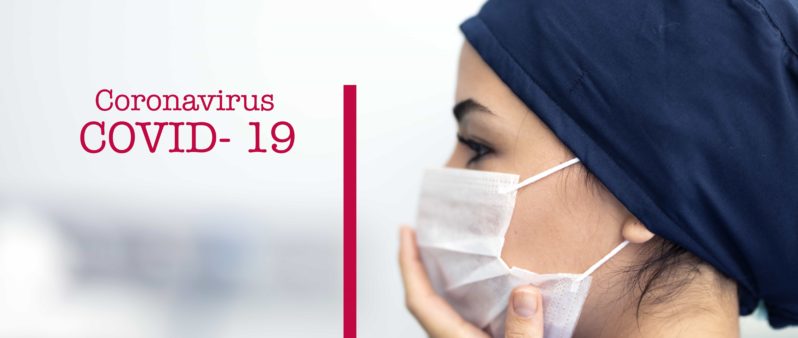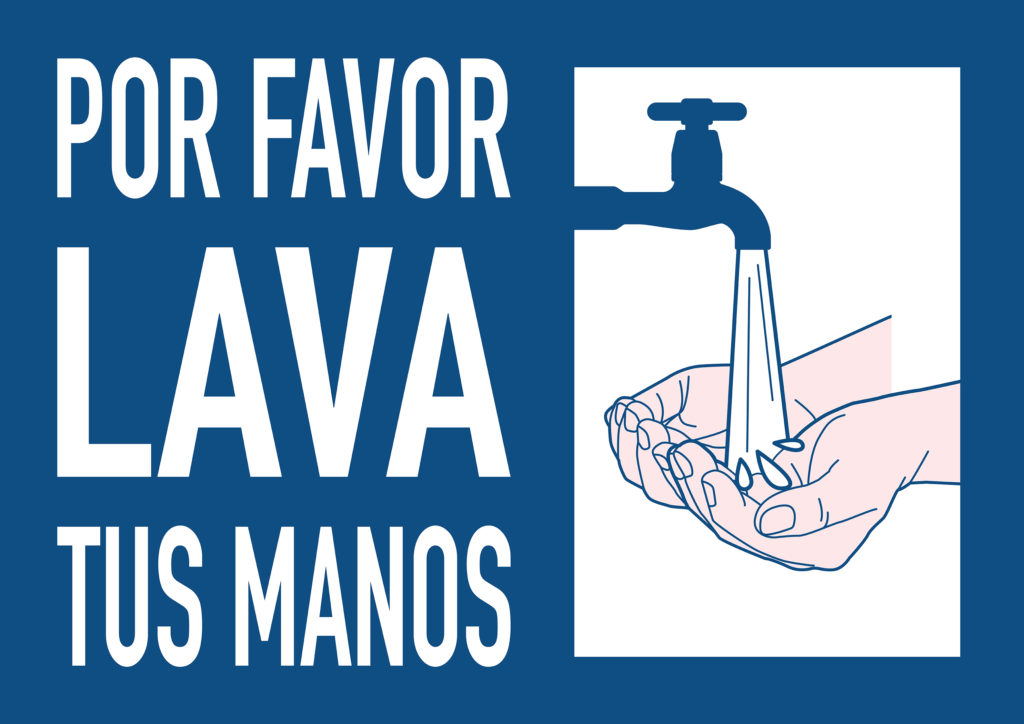
We all have different motivations for learning languages.
Some people learn languages for vacation, some just for fun, some to speak with friends across the globe, and others want to use their skills for business opportunities.
However, with the world currently facing the crisis of Covid-19, at times like this, knowing another language can literally save lives.
The United States has around 41 million native Spanish speakers. That’s almost equal to the entire population of Spain! Of these 41 million, an estimated 25 million have little or no knowledge of English.
At a federal level, governments of countries with large minority language populations, such as the United States, are publishing updates in multiple languages to help these citizens.
But what happens on the front line when non-English speakers present with suspected cases of Covid-19?
Normally they would call an interpreter. However, professional interpreters are now being asked to work remotely or stay at home to stem the spread of infection. While this helps reduce virus transmission, it creates a communication barrier between English-speaking medics and patients who speak other languages.
For these medics, the Spanish they remember from high school isn’t much help. The vocabulary taught in high school isn’t relevant in the professional environment: in medical situations, specific language skills are needed.
At Pimsleur, we recognize the fantastic effort and sacrifices that our medical teams make every day. Doctors, nurses and support staff are all working round the clock to catch the fallout of this pandemic.
To support them, we’ve created a reference list of phrases and vocabulary for medical personnel to use when treating Spanish-speaking patients who don’t know English.

Key Covid Vocabulary for Treating Patients in Spanish
The name of the virus is the same as in English: both el coronavirus and el Covid-19 work.
Note: 19 is ‘diecinueve’ in Spanish, which sounds like dee-ess-ee-NWEH-vey
Here are some more helpful terms:
- Cuarentena (quarantine)
- Riesgo de infeccion (risk of infection)
- Lávese los manos, por favor. (Please wash your hands.)
- Lavarse los manos (to wash one’s hands)
- Neumonía / pulmonía (pneumonia)
- La mascarilla (face mask)
How to Start a Conversation with Spanish-Speaking Patients
You might want to introduce yourself to the patient before you begin treating them. Here’s the vocabulary you need to do that:
Yo soy el doctor/la doctora X (I am Dr. X. El doctor is male, la doctora is female)
¿Cómo se llama? What is your name?
¿Cómo se siente hoy? (How do you feel today?)
Asking About Covid Symptoms in Spanish
The most important conversation will be discussing symptoms with patients. Here’s how to ask about the common symptoms of Covid-19:
¿Cuáles son sus síntomas? (What are your symptoms?)
¿Tiene…? (Do you have…?)
- dificultades para respirar (trouble breathing)
- fiebre (fever)
- tos (cough)
- tos seca (dry cough)
- cansancio (fatigue)
The patient may also describe other symptoms to you, that aren’t related to Covid-19. Although it won’t help with diagnosing, it’s useful to recognize them in case a patient mentions them.
Tengo… (I have…)
- gripe (flu)
- catarro (a cold)
- resfrío (a cold)
- descenso (a cold)
- moqueo (a runny nose)
- flemas (a productive cough)
- dolor de garganta (sore throat)
- dolor de cabeza (headache)
- la nariz tapada (blocked nose)
Estoy constipado/constipada. (I have a cold.)
Me duele la garganta . (I have a sore throat)
Estoy enfermo/enferma. (I am ill – male and female versions)
Asking Spanish-Speaking Patients for More Information About Pre-Existing Conditions
You might need to ask about a patient’s history. Here’s some vocabulary to help you do that:
¿Tiene…? (Do you have…?)
- presión alta/baja (high/low blood pressure)
- asma (asthma)
- diabetes (diabetes)
¿Ha estado en contacto cercano con una persona que se sepa que tiene el Covid-19? (Have you been in close contact with someone who is known to have Covid-19?)
A response to this could be: Mi padre tiene Covid-19 (My father has Covid-19)
Other possible contacts include:
- mi madre (my mother)
- mi hermano/hermana (my brother/sister)
- mi hijo/hija (my son/daughter)
- mi abuelo/abuela (my grandpa/grandma)
- mi amigo/amiga (my friend)
- mi compañero or mi colega (my colleague)
Confirming a Diagnosis of Covid in Spanish
Once you’ve discussed symptoms, you’ll want to explain any testing or results with the patient. Here’s how to do that:
Voy a hacer una prueba para Covid-19 (I’m going to perform a test for Covid-19)
Voy a tomar una muestra de la nariz/garganta con este hisopo de algodón. (I’m going to swab your nose/the back of your throat with this cotton bud.)
Los resultados estarán listos en un plazo de X horas/dias. (The results will be ready in X hours/days)
Tenemos los resultados de las pruebas de laboratorio. (We have received the test results)
La prueba de Covid-19 salió positiva/negativa. (You have tested positive/negative for Covid-19)
Conversely, if the patient’s symptoms mean Covid-19 is not a possibility, say to them:
Sus síntomas no son típicos del Covid. (Your symptoms are not typical of Covid.)
Explaining Treatment After Diagnosis
Here are a few phrases you’re likely to need for explaining the next steps for your Spanish-speaking patients:
Es necesario que se quede en casa, en aislación (durante siete/catorce días.) (You have to remain isolated at home (for 7/14 days.)
No salga de su casa. (Do not leave your house.)
Si los síntomas se agraven, busque ayuda médica de inmediato. (If your symptoms worsen, seek medical attention immediately.)
Tome mucho líquido para permanecer hidratado. (Drink lots of fluids to stay hydrated.)
¿Tiene seguro médico? (Do you have health insurance?)
No hay vacuna contra el Covid. (There is no vaccine for Covid.)
¿Necesita que contactemos con su familia? (Do you need us to contact your family?)
Hay que estar alerta si siente una dificultad para respirar. En este caso, sería necesario buscar ayuda médica. (You need to look out for any difficulty with breathing. If this happens, seek medical attention.)
We hope you find this useful on the front line for all your Covid in Spanish needs.
If our guide has encouraged you to learn more Spanish, our Pimsleur Spanish course covers a range of topics, integrating health and wellbeing phrases into the lessons. We use native Spanish speakers with a variety of accents to help you respond to real-world situations.
2 Comments for "COVID SOS: Our Guide to Treating Patients in Spanish"
This is great and a needed step in a good direction but it would be awesome if pimsleur offered am entire medical Spanish course to really thoroughly learn how to treat patients with a variety of ailments. Just teaching the general language and common phrases needed for a thorough exam would be great. I used pimsleur before and loved the technique but it wasn’t very targeted to my desire to learn medical Spanish.